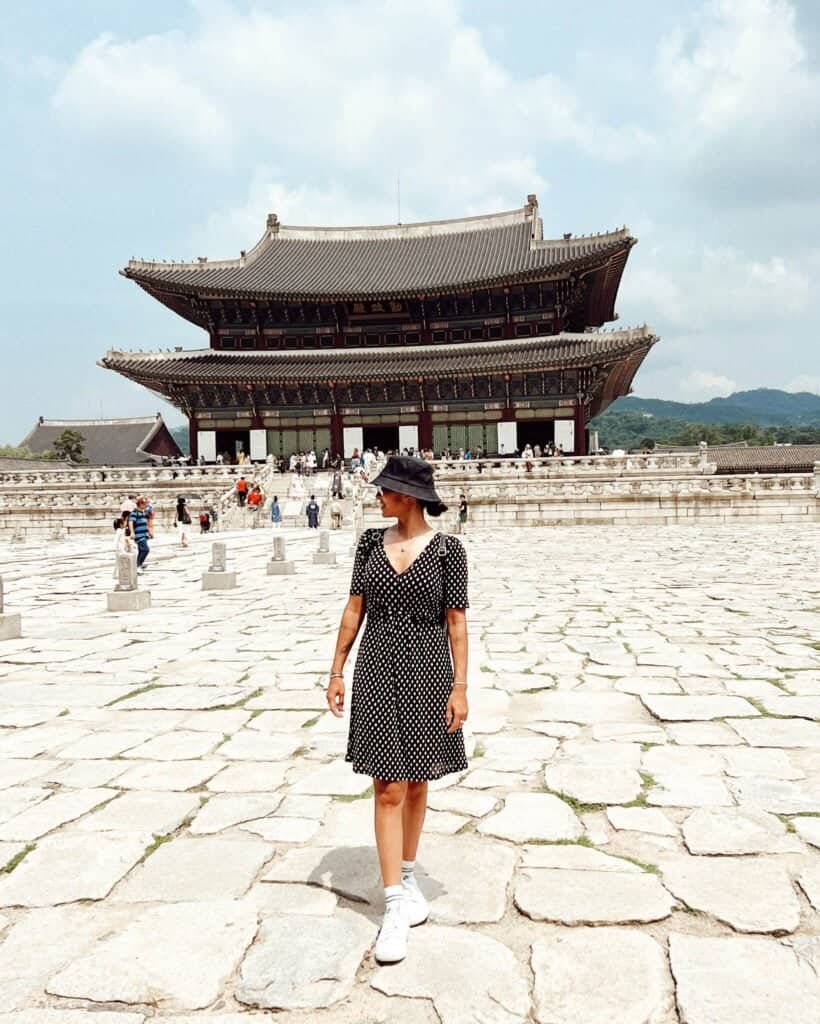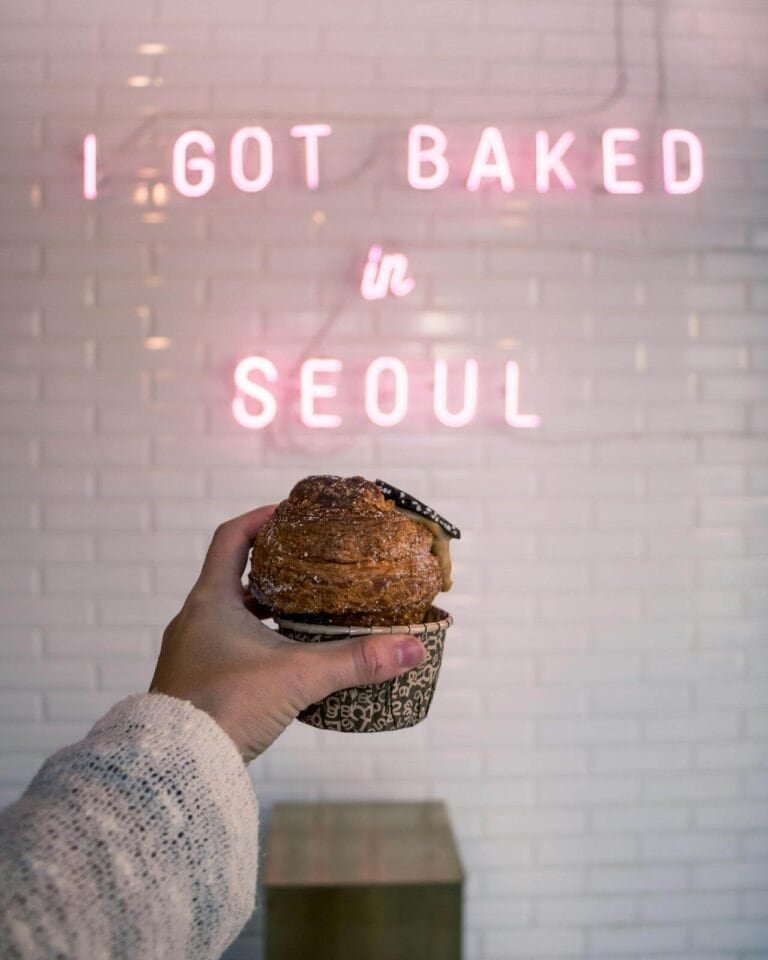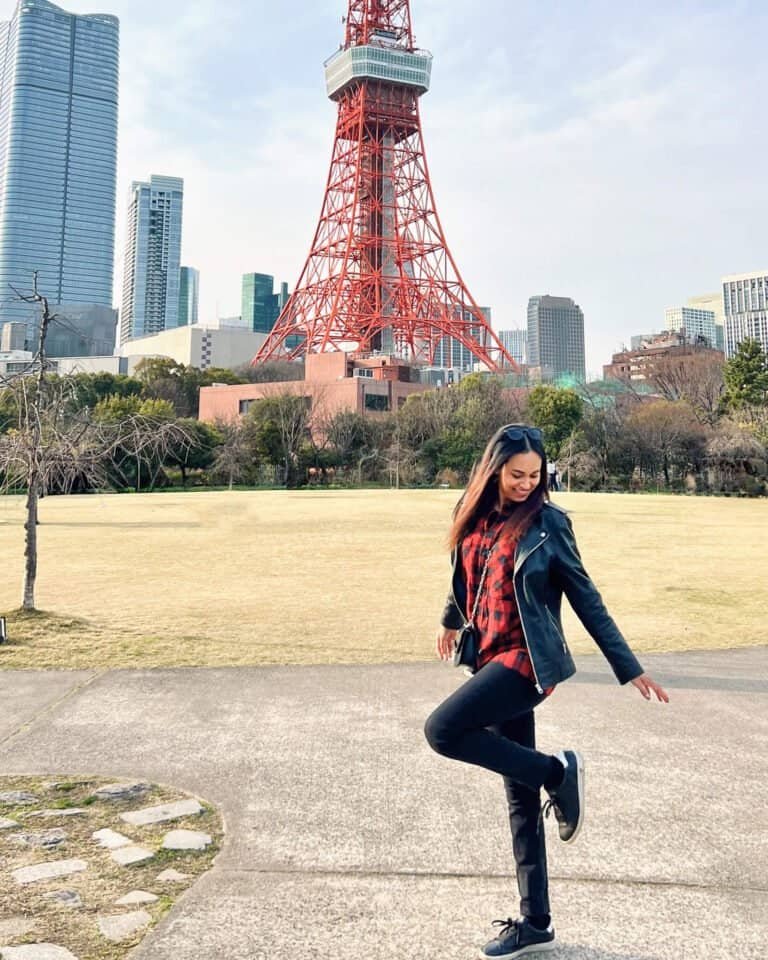12 Essential Travel Tips For Seoul For First Time Visitors
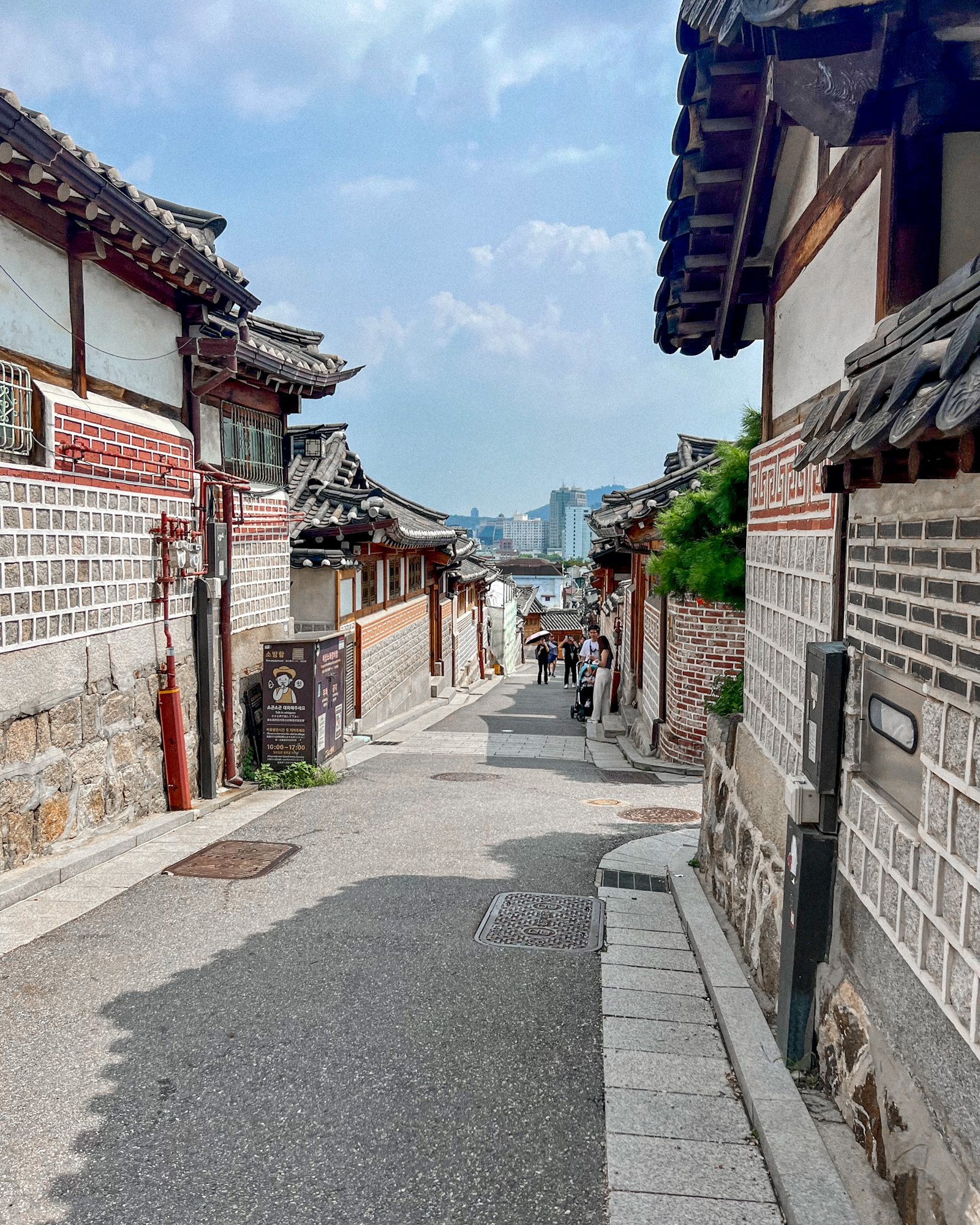
This post may contain affiliate links. That means if you click and make a purchase, I may earn a small commission at no extra cost to you. I appreciate your support!💙
Are you going on your first solo travel adventure to Seoul? Here are 12 essential travel tips for Seoul to make your journey seamless and unforgettable!
Seoul, South Korea, is a fantastic destination for solo travel! I’ve been there multiple times. However, it helps if you know a bit about Korean culture and customs before getting there!
I wished I had known all of them before arriving! Knowing them beforehand will save you a lot of hassle, from restaurant etiquette to getting a T-money card to get around and downloading Naver Maps.
Dive into these quick tips for first-time solo travel to Seoul! I’ll tell you the most important things you must know when travelling to Seoul alone!
Do not forget to check out my perfect 5-day itinerary to Seoul and 21 solo things to do in Seoul for an unforgettable trip!
- ⛑️ Do NOT travel without travel insurance: Check out Safety Wing for reliable travel insurance.
- 🏨 Stay in L7 Myeongdong by Lotte.
- 🎪 Get a professional photoshoot with a hanbok.
- 🔥 Go to the Nanta Theater Show; it’s epic!
- ✈️ Book your ticket to Seoul with Skyscanner.
- 🎰 Find the best tours and excursions to Seoul with the flexible Get Your Guide.
- 🎫 Get the Discover Seoul Pass for discounts on attractions.
- 📞 Check out Airalo for great ESIM bundles.
Why Do I Need These Travel Tips for Seoul?
Seoul is an amazing city! But there are some things I wished I had known before my trip to Seoul. It would have made my trip a little easier, and I would have had a better understanding of how things are done in South Korea.
From simple things in a restaurant to certain customs or practical things to get around in Seoul.
Is Seoul A Good destination for solo travel?
Seoul is an absolute dream for solo travellers! What truly sets it apart is the incredible sense of safety. South Korea consistently ranks as one of the safest countries for solo female travellers too, right up there with Singapore, Japan, and Chiang Mai. From the moment I landed, I never once felt uneasy.
Beyond safety, Seoul has this vibrant and trendy energy. There’s always something cool to do—trying the latest viral restaurant, exploring cultural gems, visiting museums, hopping between trendy coffee spots, or dancing the night away in Hongdae until sunrise.
For solo travellers, the city offers endless possibilities. You can spend hours café-hopping, enjoy a workout at an outdoor gym, or indulge in delicious street food in Myeongdong.
Public transport is great and affordable in South Korea, making it a great option for solo travellers. You can get around the country easily without breaking the bank! If you stick to the major cities like Seoul and Busan and take a trip to Jeju, you’ll find plenty of things to do to keep yourself entertained.
Essential Solo Travel Tips For Seoul
1. The airport express train (NEX) to Seoul
Travelling from Incheon Airport to Seoul is a breeze with the Airport Express Train, known as Arex. Opting for the express train ensures a smooth and straightforward journey, getting you directly to Seoul Station in just about 50 minutes without any intermediate stops.
Alternatively, there’s the ‘all-stop train,’ which makes several stops along the way, ideal if your accommodations are near any of these stations.
Upon arrival at the airport’s arrival hall, simply follow the signs directing you to the ‘airport express train.’ While you can reserve a seat online, purchasing a ticket from one of the vending machines onsite is just as convenient. These machines accept credit card payments, allowing you to select your departure time hassle-free.
Though the express train operates at specific intervals, it’s less frequent than the all-stop train, so be sure to check the schedule on their website beforehand.
Once you’ve secured your ticket, the machine will issue a ticket with an assigned seat. The Arex offers a comfortable and spacious journey, with room for your luggage, making it an excellent choice for travelling to Seoul Station.
Pro tip: Ensure a hassle-free airport-to-city journey by booking your Airport Express Train ticket in advance!
The fare for an express train ticket from Terminal 2 to Seoul Station is approximately $8. Upon reaching Seoul Station, you can easily transfer by subway or bus to your hotel.
Remember to have some cash on hand to purchase your subway ticket!
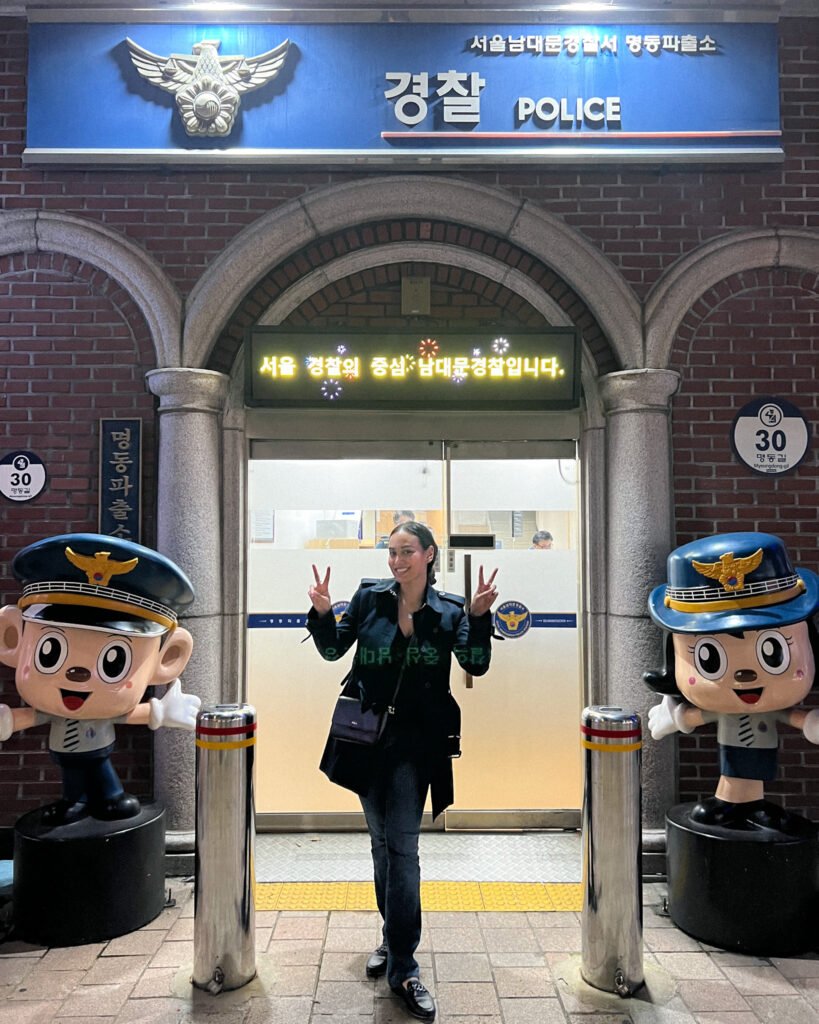
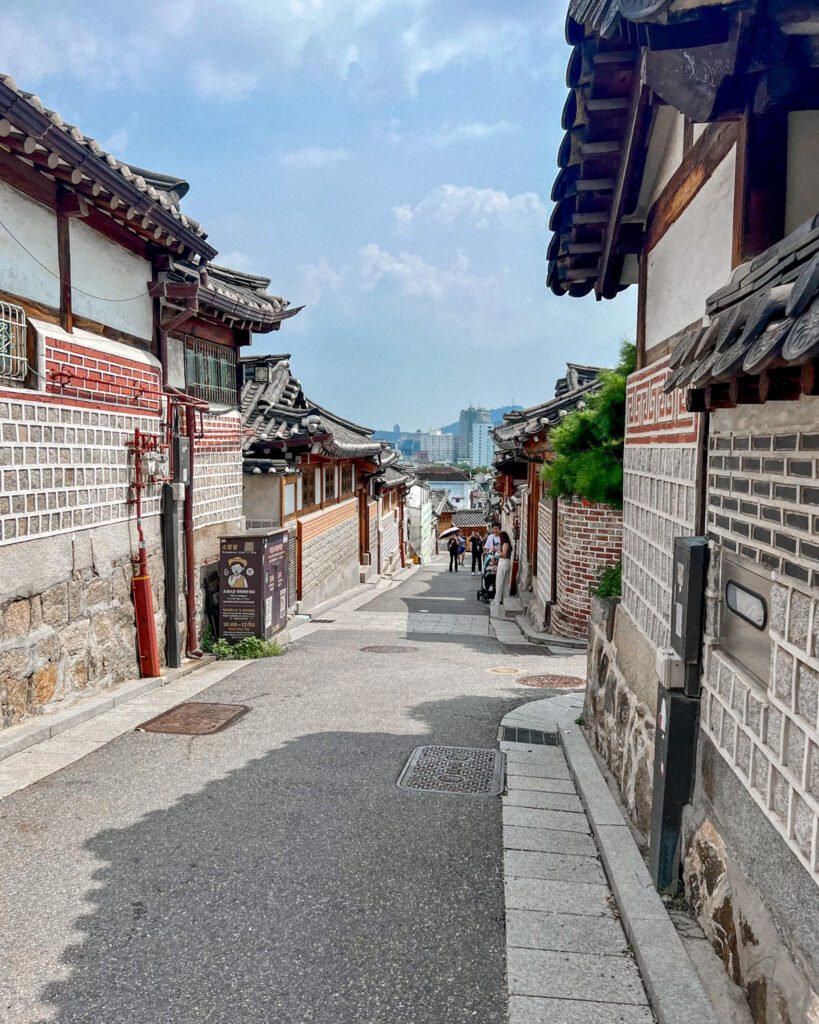
2. Get a T-money card for public transport
Are you heading to Seoul and relying on public transport? Don’t forget your T-money card—it’s your ultimate travel companion in South Korea! This little card is a lifesaver, simplifying your journey across the city. It covers public transport fares, but you can use it for convenience store purchases or even when catching a taxi.
Are you wondering where to get one? Look out for the T-money logo at various locations, particularly convenience stores like 7-Eleven or GS25. Luckily, convenience stores are everywhere in Seoul, so you won’t have trouble finding one on practically every street corner.
Getting a T-money card is probably one of the most important solo travel tips for Seoul!
The cost of a T-money Card varies depending on the type you choose. From adorable designs featuring cute pictures to those featuring your favourite K-pop idols like BTS, there’s something for everyone. You can even get holders to attach your T-money card to your phone for easy access.
While you can pay for the card itself using a credit card, topping it up requires cash! This applies to the top-up machines at subway stations as well, so be sure to have some cash handy.
Are you wondering how much to load onto your T-money card? During my ten-day stay, I topped up with 20,000 WON, which lasted me at least a week for daily use!
For those interested in both a T-money card and a SIM card, check out the Traveller SIM & T-money bundle, offering unlimited data for seamless exploration!
3. Get a Seoul Discovery Card for tourists
Tourists can benefit from the Seoul Discovery Card, which offers discounts on a range of experiences!
If you’ve experienced the New York City Pass, you’ll find the Seoul Discovery Card operates similarly. Available for specific durations, it unlocks discounts on attractions, dining spots, shops, and more throughout your chosen time frame.
This card is invaluable for explorers, as it helps you spend less than purchasing individual tickets for each attraction!
4. Download Naver maps
Navigating South Korea? Make sure to have Naver Maps on hand—it’s a must! Korean apps are supreme in this tech-savvy country, meaning you’ll need to download a few local apps to get around efficiently.
Previously, Google Maps didn’t work in South Korea, making it practically useless. However, it has improved, allowing you to zoom in, view streets, and search in English. The only drawback is the lack of directions by foot or car.
Despite this, Naver Maps still takes the crown, especially for navigating public transport. Keep these essential solo travel tips for Seoul in mind!
Naver Maps has an English version, though it’s about 30% translated. But hey, that’s plenty to help you find your way around the streets and explore your public transport options.
And let me tell you, using the subway on Naver Map is like having your own guide! It gives you all the details—like which side the doors open on, which subway exit to go for (trust me, there are loads!), and even which train car will make your transfer a breeze. Handy, right?
5. Download Kakao Taxi
I’ve got a little secret to share as part of these 10 fantastic solo travel tips for your first Seoul adventure! Just like Naver Maps, South Korea has its own taxi app. What you need is Kakao Taxi.
In my experience, it works faster than Uber. Uber didn’t work in Seoul about a year ago, but it does now!
You might think you need a Korean mobile number to use Kakao Taxi, but fear not! There’s this handy option called ‘pay to the driver’ that lets you book a taxi and settle up directly with the driver, with no local number required.
You can leave your cash at home because all Korean taxis accept credit cards. How’s that for convenience?
6. Use the Public Bike System in Seoul
Seoul has an awesome public bike system for when you need a break from the hustle and bustle of public transport. Even though the buses and trains are super handy, they can get crazily crowded, especially during rush hour.
As a foreigner, you can get passes and hop on a bike. Now, the app might not be the most foreigner-friendly—it claims to be in English, but you’ll still spot a fair bit of Korean.
But hey, the map’s got your back! It shows you where the bike docks are and how many bikes are available. And get this: the cheapest option is to grab a day pass for just a few bucks, which gives you a bike for the entire day.
Now, here’s the scoop: while some spots do have bike lanes, they’re not everywhere. You might catch folks cruising on the sidewalks when the roads are too jam-packed.
Need more details? Check out this link for English information on the Seoul public bike system!
featured post
7. Restaurant Etiquette in Seoul
Let me give you the lowdown on dining out in Seoul—trust me, it’s a bit different but oh-so-good!
First, reservations are not always a thing in Seoul. You show up, and if it’s packed, you write your name on the waitlist, queue and wait for a table.
Now, here’s where it gets fun: Have you ever heard of hidden cutlery? Yes, it’s a thing! Check the drawer in your table—your cutlery and chopsticks might be hiding there. Plus, you’ll often find a little bin and some complimentary water to take.
Oh, and those scissors? They’re not just for show—they’re for cutting your meat! I know, genius, right?
In Seoul, flagging down your waiter is normal. Unlike in Europe or the US, where they regularly stop by your table, you have to give them a call here. Some spots even have a handy call bell near the table for summoning your server!
And when it’s time to settle up, forget about waiting for the check. Most places have a register where you pay on your way out. Super handy!
8. You need an e-Sim
Data has become like oxygen for us, especially when we’re travelling. It makes you wonder how we travellers even survived before the internet, right?
But here’s the good news: Seoul’s got your back with Wi-Fi practically everywhere! You’ll find free Seoul Wifi in spots like the airport, restaurants, stores, on buses, and even as you wander around the city.
Now, I’ll be honest—there were moments in Seoul when I debated whether to grab a local SIM card. Relying solely on free public Wi-Fi isn’t always a great idea because it doesn’t always work well.
That’s where an eSIM card comes in handy, especially when you’re navigating, checking out public transport options, or ordering a taxi. Trust me, you need it!
Airalo
I suggest considering Airalo. I’ve relied on Airalo for all my journeys, including my trip to South Korea. It lets you install an eSIM on your phone and purchase data packages.
This is a great backup plan if the free public Wi-Fi is unreliable. You can even use the same e-sim and data for your next destination! It’s best to organize this a few weeks before your travel date!
A portable Wi-Fi is also an option if you need to connect multiple devices!
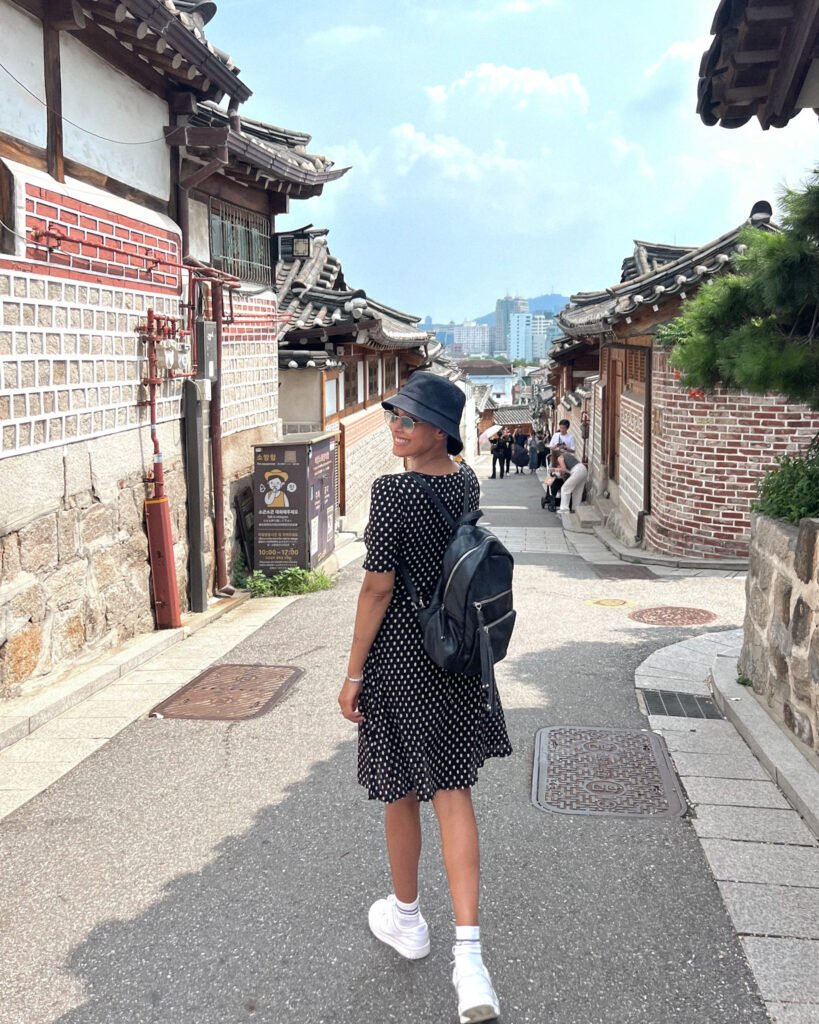

9. Always Have Cash On You
While cards are commonly accepted in Seoul, having cash on hand is always practical. I strongly advise getting some local currency at the airport. I always exchange around $50. You’ll need it to top up your T-money card and purchase a subway ticket.
I made the mistake of forgetting this detail myself. When I arrived at Seoul Station, I couldn’t use the subway because I had no cash—the subway ticket machines only accepted cash!
To exchange a proper amount at better rates, I suggest checking out the exchange offices in Myeongdong! In my experience, they have the best rates in the city. Always bring your passport; you’ll need it to exchange money.
10. The weather in South Korea
Seoul’s weather can be a factor you want to consider when planning a trip to South Korea! Winters in Seoul are brutally cold—I’m not even joking! I’ve visited Seoul a few times in winter, and the temperatures were -20 degrees Celsius (-4 degrees Fahrenheit).
In summer, especially in August, it’s extremely hot and humid! Weather like this could ruin the fun of sightseeing in the city, making it almost impossible to walk around. The heat was different from other countries.
Seoul can also be subject to hefty rain showers! Bring an umbrella and forget about getting a taxi out! As soon as it starts to rain, everybody wants to take a taxi, and it is almost impossible to get. Keep that in mind if you need to be somewhere!
11. Try to avoid Rush hour
Every country has rush hour, but I felt rush hour in Seoul is different! If you can, try to avoid going out for food and taking the subway during rush hour. The subway is very busy around that time with everyone trying to get home or get to work.
During lunch hour, most people leave the office to get lunch. I’ve noticed queues at many places and restaurants are a lot busier, making it more challenging to get a table. If you can, avoid these moments.
12. Seoul is the least solo-friendly Asian Country
Don’t get me wrong, because this seems to undermine everything I previously mentioned. While Seoul is a great destination for solo travel, it’s not as solo-friendly as other Asian countries like Thailand, Singapore or Japan.
South Korea is a society that’s very couple-based. You’ll see couples everywhere and even wearing the same outfits. I’ve seen a few restaurants that didn’t accept solo-eating people (don’t freak out, it’s an exception).
A lot of great dishes like Korean BBQ and dak galbi (a chicken, rice, and cheese dish) are always made for two people or more. Some restaurants won’t take solo people unless, of course, you order for two.
Unlike in Japan, where solo dining is very common and there are counter seats at almost every restaurant. There’s even a solo yakiniku (Japanese BBQ)!
But as I said, it’s nothing too serious, there are plenty of places to eat and many things to do!
Plan your trip
With my online resources
Use my travel planning roadmap with all my digital resources to book every detail of your trip!
I hope these solo travel tips for first-time travellers to Seoul will come in handy! If I had known them before coming to Seoul, it would have saved me some confusion or hassle!
Let me know in the comments below if they worked out for you! As always, I’m here to help! If you have any questions, please comment on my latest Instagram post!
Ps. Check out information about Korean etiquette or get a Seoul Map from the Seoul Tourism Organization!


